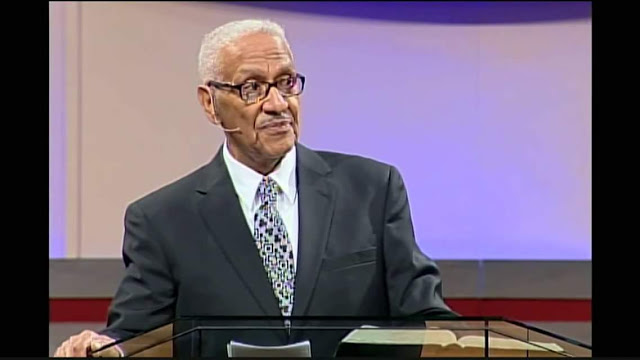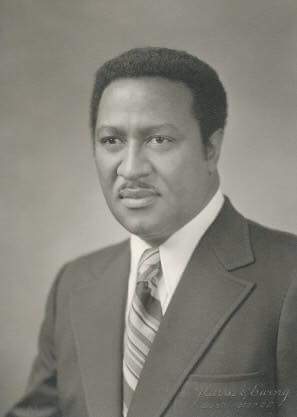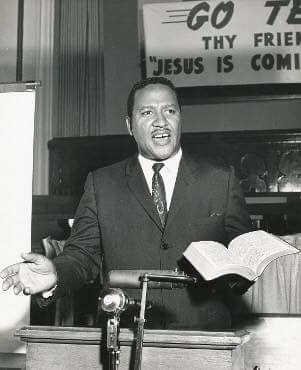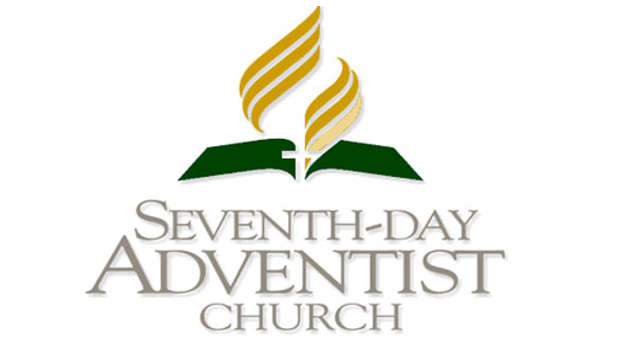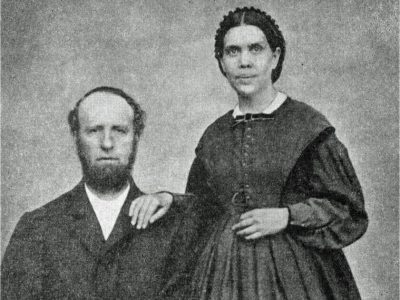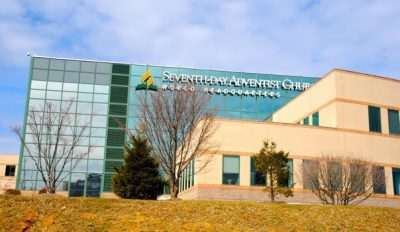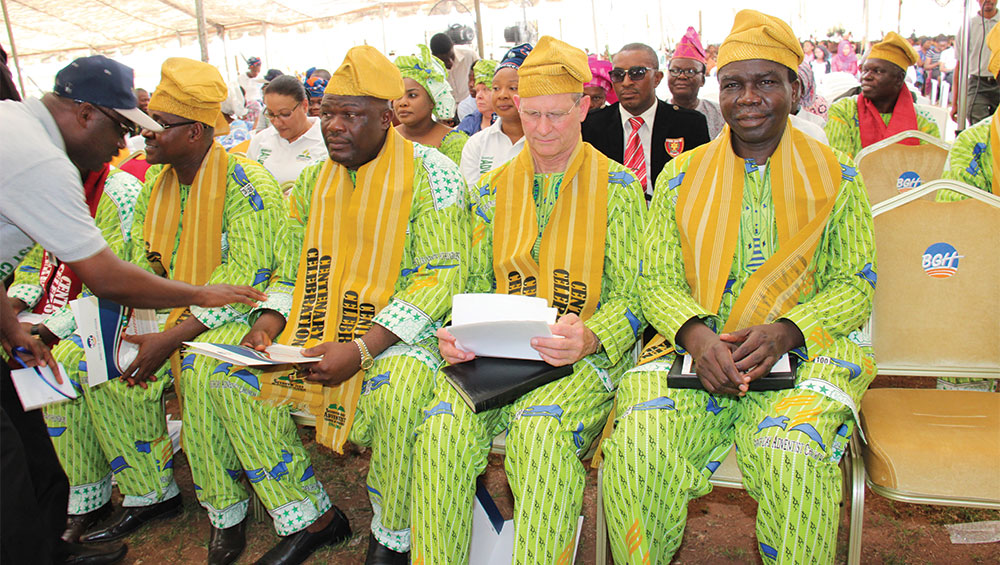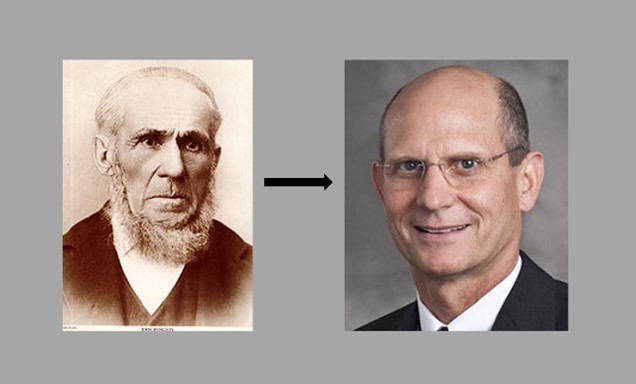
List, biography and photos of presidents of the General Conference of Seventh Day Adventist Church from 1863 till date
Updated – June, 2022
The Seventh Day Adventist Church runs a democratic system of government which means decisions are made by elected committees through the vote of members led by the Holy Spirit.
The organization consist of the following levels:
General Conference
Division
Union Conference/Mission
Conference/Mission
District
Local Church
A President is elected at the General Conference Session every 5 years and presides over the Executive Committee.
Below is the list and biography of General Conference Presidents from 1863 till date with their respective photos.
1. John Byington
- He was born in 1798 and died in 1887
- Country: United States
- Duration: 1863-1865
John Byington was the first president of the Seventh Day Adventist Church. His father, Justus, was a soldier in the American Revolutionary War, an itinerant Methodist Episcopal preacher, and later one of the founders of the Methodist Protestant Church, becoming an early president of its Vermont Conference. At 7 years of age John first came under the conviction of sin, and at 18 (1816) was converted. He became active in Methodist laity work, but at 21 years of age his health failed, and for three years he suffered depression. He returned to work dividing his time between farming and preaching.
In 1844 he heard a Millerite sermon in Cleveland, Ohio, but was not overly impressed. In 1852, upon reading a copy of the Review and Herald (now the Adventist Review) he began to keep the seventh-day Sabbath. Shortly afterward James and Ellen White visited his home at Buck’s Bridge. For three years he conducted Sabbath meetings in his home, then he erected and owned a church building on his property. This is reputed to have been the first Seventh-day Adventist-built church. In a nearby home his daughter, Martha (later the wife of George W. Amadon) taught what is thought to be the first Adventist elementary school (1853).
At the request of James White, Byington relocated to Battle Creek, Michigan in 1858. He worked closely with James White and J. N. Andrews in helping to plan for the growing Sabbatarian Adventist movement. In 1863 at the initial organization of the General Conference in Battle Creek, Michigan, he became the denomination’s first president – an office he held for two one-year terms. James White, who was elected first, declined the position.[1]
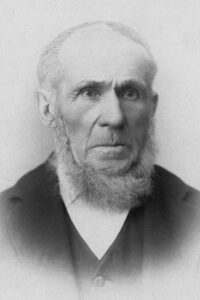
2. James Springer White
- He was born in August 4, 1821 and died in August 6, 1881
- Country: United State
- Duration: 1865-1867
James was a co-founder of the Seventh-day Adventist Church. James Springer White was the fifth of nine children. At 19 he enrolled at a local school, where he earned a teaching certificate. He briefly taught at an elementary school, then left teaching and become a preacher in 1843. He started a paper which is still published as the “Adventist Review” today; it is a source of communication for the Sabbatarian Adventist movement. He helped manage church publications as president of the Review and Herald Publishing Association. He also served as president of the General Conference of Seventh-day Adventists. He was also known as Elder J White and the husband of an Adventist pioneer, Author and prophetess – E.G White. In 1865 he suffered from a stroke and retired from the ministry. During the summer of 1881, he came down with a fever, sickened, and died.
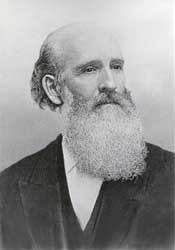
List of Presidents Of The Seventh Day Adventist Church From 1863 Till Date
3. John N. Andrews
- He was born in July 22, 1829 and died in October 21, 1883
- Country: United States
- Duration: 1867-1869
John was elected as the third president of the General Conference in 1867, following John Byington and James White.
Born in Poland, Maine in 1829, Andrews became a Millerite in February 1843 and began to observe the seventh-day Sabbath in 1845. He met James White and Ellen G. White in September 1849. Later, the Whites boarded with the Andrews family.[AdSense-A]
In 1850 he began itinerant pastoral ministry in New England, and he was ordained in 1853. Andrews played a pivotal role in the establishment of Adventist theology. Among his more memorable achievements in Adventist prophetic interpretation, was developing the connection between the two-horned beast of Revelation as the United States of America.
On October 29, 1856, Andrews married Angeline Stevens (1824–1872) in Waukon, Iowa, where the Andrews and Stevens families had recently moved. In June 1859 a conference in Battle Creek voted that Andrews should assist J. N. Loughborough in tent evangelism in Michigan. He returned to Iowa in the fall of 1860. During these years their first two children were born: Charles (b. 1857) and Mary (b. 1861), and Andrews wrote the first edition of his most prominent book, The History of the Sabbath and the First Day of the Week (Battle Creek Steam Press, 1859).
In June 1862 John left Waukon to work with the evangelistic tent in New York and assisted in the founding of the New York Conference. In February 1863 Angeline and their two children moved from Iowa to join him in New York. Two more children were born to John and Angeline while in New York, both of whom died in infancy from tuberculosis. In 1864, John was chosen as the denominational representative to the provost marshal general in Washington, D.C., to secure recognition for the church as noncombatants. On May 14, 1867 Andrews was elected the third president of the General Conference (until May 18, 1869) after which he became editor of the Review and Herald (1869–1870), now the Adventist Review.
In 1872 Angeline died from a stroke. John moved to South Lancaster, Massachusetts, where the children could stay with the Harris family. Two years later (September 15,1874) John, along with his two surviving children, Charles and Mary, were sent as the first official Seventh-day Adventist missionaries to Europe. Andrews helped start a publishing house in Switzerland and an Adventist periodical in French, Les Signes des Temps (1876). In 1878 Mary contracted tuberculosis and died soon after arriving for treatment at the Battle Creek Sanitarium.

4. James Springer White
James was re-elected as the president of Seventh Day Adventist church in 1869
Country: United States
Duration: 1869-1871
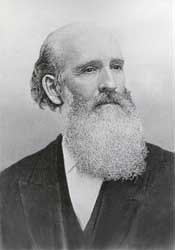
5. George Ide Butler
- He was born in 1834 and died in 1918
- Country: United States
- Duration: 1871-1874
He replaced James White as president of the general conference in 1871. Butler’s parents were closely involved in the beginnings of the Seventh-day Adventist Church, but George expressed leanings to infidelity. In 1853 his family moved to Iowa where he was converted at age 22 and baptized by J. N. Andrews. He then settled on a farm and taught school during the winter months. On March 10, 1859 he married Lentha Lockwood (1826-1901). They afterward settled near Waukon, Iowa, where Butler resumed teaching.
In 1865, after issues in the Iowa Constituency meeting and subsequent resignation of its leaders, Snook and Brinkerhoff, Butler was elected Iowa Conference president. In June 1867 Butler was given a ministerial license, and in October was ordained. He worked indefatigably as an evangelist, bringing unity to the previously fragmented conference. As a result of his rebuttals to the Marion party, which focused their dissent upon the ministry of Ellen G. White, Butler became one of the foremost apologists to defend her during the 1860s and 1870s.
In 1872, due to the failing health of James White, Butler was elected president of the General Conference. Butler was active in raising funds to start Battle Creek College (now Andrews University), and to establish the Pacific Press in Oakland, California. In August 1874 Butler resigned as president and James White, now sufficiently recovered, took back the reins of leadership.
In 1901 Lentha died and George was elected the first president of the Florida Conference. The following year Butler became the first president of the South Union Conference and the Southern Publishing Association. In 1907 Butler married Elizabeth Work Grainger, whose husband had died in the mission field, and the next year they retired a second time.
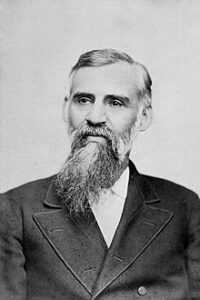
6. James Springer White
He returned to the presidency in 1874 to becomes the 6th president of the Seventh Day Adventist Church.
Country: United States
Duration: 1874-1880

7. George I Butler
After James White’s health began to falter a second time, Butler was once again elected General Conference president. By October 1880 he had returned as General Conference president frequently counseling with Ellen White. In 1882 he also became president of the Seventh-day Adventist Publishing Association. In 1886,
Country: United States
Duration: 1880-1888

8. Ole Andres Olsen
- He was born in 28 July 1845 and died in 29 January 1915
- Country: Norway
- Duration: 1888-1897
Born in Skogen, in Songdalen near Kristiansand, Norway, Olsen emigrated to the United States to Wisconsin at the age of five. By the age of nine his parents had begun to keep the seventh-day Sabbath. He was baptized in 1858. From 1876 to 1877 he attended school at Battle Creek College (now Andrews University). In 1869 the Wisconsin Conference granted him a ministerial license. On 2 June 1873, he was ordained as a minister. The following year he was elected president of the Wisconsin Conference.[AdSense-C]
At the 1888 General Conference session he was elected president of the General Conference of Seventh-day Adventists.[3] Olsen was the first non-American-born president of this church organization and this is reflected in the global and culturally sensitive approach he took in his presidency. He was also one of the first individuals to advocate the formation of Union Conferences within the Seventh-day Adventist church. He was not reelected as world church president in 1897 and instead became a missionary in South Africa. In 1901 he was asked to head the work of the Seventh-day Adventist church in Great Britain.

9. George A. Irwin
- He was born in November 17, 1844 and died in May 23, 1913
- Country: United States.
- Duration: 1897-1901
Irwin was born close to Mt. Vernon, Ohio on November 17, 1844. At age 17, he volunteered for the Union Army during the American Civil War, where he was placed with the 20th Regiment of the Ohio Volunteer Infantry. He was captured near Atlanta and spent time at Andersonville Prison.
In 1867, Irwin married a schoolteacher named Nettie Johnson. The George Irwin family were converted to the Seventh-Day Adventist faith in 1885 by a series of meetings held by D. E. Lindsay and W. H. Saxby. He became president of the Ohio Conference of Seventh-Day Adventists in 1889. In March 1897, he was elected President of the General Conference at the General Conference session held in Lincoln, Nebraska. As president, he sought to re-organize the duties of the ministry, and made a tour of Australia.[1]
A. G. Daniells was elected General Conference President in 1901, and Irwin was asked to replace him as head of the Australian Union. He became disheartened about his time as General Conference president, viewing it as an “utter failure.” He returned to the United States in 1905 and served as vice-president of the General Conference. He was installed as president of the Pacific Union Conference of Seventh-Day Adventists in 1910. He left this position two years later to become president of the Board of Directors of what is now Loma Linda University. The likely reason for this change was his failing health. He endured health problems until his death on May 23, 1913.

10. Arthur Grosvenor Daniells
- He was born in September 28, 1858 and died in April 18, 1935
- Country: United States
- Duration: 1901-1922
Arthur G. Daniells was Born in Iowa, he was the son of a Union Army surgeon who died in the American Civil War. At the age of 10 he was converted to the Seventh-day Adventist faith being baptized by pastor George Butler, and in 1875 entered Battle Creek College (now Andrews University), remaining only one year because of ill health. After he and his wife taught in public schools for one year, he received a call to the ministry. Feeling timid and unprepared, he hesitated, but after praying earnestly, he came under conviction. He began his ministry in 1878 with Robert M. Kilgore in Texas. He was then secretary to James and Ellen White for one year, and later an evangelist in Iowa.
Arthur is th most notably the longest serving president of the General Conference. He began to work for the church in Texas in 1878 with Robert M. Kilgore and also served as secretary to James and Ellen White for one year, and later worked as an evangelist. In 1886, he was called to New Zealand, and was one of the pioneers of the Seventh-day Adventist Church in the South Pacific. Daniells had astounding success through his dynamic preaching and on October 15, 1887, he opened the first Seventh-day Adventist church in New Zealand at Ponsonby. While there he served as president of the New Zealand Conference (1889 to 1891), and of the Australia Conference (1892 to 1895). Later, he became the president of the Australasia Union Conference before becoming president of the General Conference in 1901 and served as president until 1922
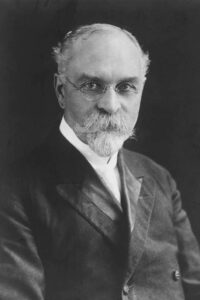
11. William Ambrose Spicer
- He was born in December 19, 1865 and died in October 17, 1952
- Country: United States
- Duration: 1922-1930
William A Spencer was born December 19, 1865 in Freeborn, Minnesota in the United States in a Seventh-day Baptist home. Spicer worked for the church in the United States, England and India, where Spicer College is named after him. He served as Secretary of the General Conference during the presidency of A. G. Daniells and Daniells served as the Secretary during Spicer’s years as president. The two men led the Adventist Church for the first 30 years of the 20th century.
With the experience acquired as General Conference Secretary, Spicer was elected as president of the Seventh Day Adventist Church during the 1922 General Conference session
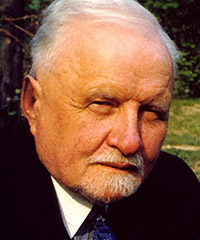
12. Charles H. Watson:
- He was born in 8 October 1877 and died in 24 December 1962
- Country: Australia
- Duration: 1930-1936
Watson was born in Australia on 8 October 1877 to a farming family who lived near Yambuk, Victoria. On 23 March 1898 he married his neighbor and childhood sweetheart, Elizabeth Mary Shanks.[1] In 1900 his family was introduced to Seventh-day Adventist doctrines. Charles resisted accepting these doctrines until 1902, when he found no biblical support for Sunday observance and was baptized by W. A. Hennig. Watson had been a successful wool buyer, but quit the business in 1907 to attend Australasian Missionary College in order to study for the ministry. He graduated from this school in 1909 and was ordained into Seventh-day Adventist ministry on 14 September 1912.[AdSense-A]
Watson was appointed president of the Queensland Conference. He was succeeded in this position in 1914 by Edwin Butz. His business sense and aptitude for remembering names and faces had gained him a reputation for administrative skill, and in 1915 he was elected president of the Australasian Union Conference. During this time he preached in Australia, Fiji, Tahiti, and the United States of America.
From 1922 until 1926 he served as vice-president and associate treasurer of the General Conference of Seventh-Day Adventists.
He returned to North America in 1930 to attend the General Conference Session, where he was elected President of the General Conference, in no small part due to his financial ability. He directed the Adventist church during a time of budget-cutting and consolidation, while accomplishing a period of denominational growth.
When his term ended in 1936, he returned to Queensland, Australia, where he assumed the duties of vice-president of the Australasian Division and president of the Australasian Union Conference. He retired in 1944. He died on 24 December 1962 at Sydney Sanitarium and Hospital, and was buried in Northern Suburbs Cemetery in Sydney, Australia.
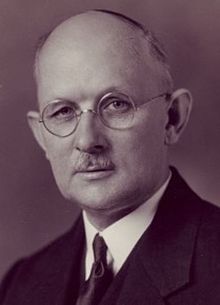
13. James Lamar McElhany
- He was born in January 3, 1880 and died in June 25, 1959
- Country: United States
- Duration: 1936-1950
Mr. McElhany was born near Santa Maria, California on January 3, 1880 to James Lamar Sr. and Mary (Ford) McElhany. James’ parents had joined the Seventh-Day Adventist church before his birth, and he was baptized into church membership at the age of 15. in 1900 he began studies at Healdsburg College, where he decided to become a minister.
He entered ministry as a colporteur for the Adventist church in 1902. In 1903 he moved to Australia and worked as a traveling evangelist, until 1906 when he moved to the Philippines and pursued evangelism there. In 1908 they again moved to a new Country, this time New Zealand. He then returned home to the United States, where he was posted to various administrative offices, including presidencies of the Greater New York Conference, the California Conference, the Southern Union Conference, and the Pacific Union Conference.
He was elected President of the General Conference of Seventh-Day Adventists in 1936. He was elected twice more, serving in this capacity until 1950. He was known for even-handedness and compassion. Reflecting on his tenure, he stated that he did not enjoy this duty, as it “wore me out.”
In later years he suffered blindness from cataracts, but had surgery that restored his sight after some time. He suffered a stroke, and died on June 25, 1959.
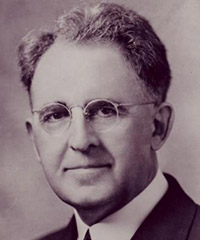
14. William Henry Branson
- He was born in 1887 and died in 1961
- Country: United States
- Duration: 1950-1954
He began denominational service as a colporteur in 1906, and as an evangelist in 1908. In 1911 he was conference president in South Carolina and then in Tennessee. By 1915 he was president of the former Southeastern Union Conference. In 1920 Branson was called as a missionary to Africa, where he organized the division and administered it from 1920 to 1930. He then served as vice-president of the General Conference from 1930 to 1946. From 1946 to 1950 he gave leadership to the denomination’s work in China during a time of “great perplexity.” In 1950 Branson was elected to the highest administrative post in the Seventh-day Adventist Church, president of the General Conference. Among his notable achievements was organizing the 1952 Bible Conference.
Helderberg College (1893), the first College of the Seventh-day Adventist Church established outside the US, named the administration building “Branson Hall” in honour of Branson who was president of the South African Division at the time when the college moved to its present site in 1928. The Branson Site of North York General Hospital in Toronto, Ontario, Canada is named for Branson. Originally the Seventh-Day Adventist Hospital and then North York Branson Hospital, it was amalgamated with the public North York General Hospital during a period of hospital consolidation in Ontario in 1997.

15. Reuben Richard Figuhr:
- He was born in October 20, 1896 and died October 28, 1983
- Country: United States
- Duration: 1954-1966
Reuben Richard Figuhr was born of Prussian descent on October 20, 1896, in Wisconsin. He served in the Philippines and then as the president of the South American Division, and then at the age of 58, just a year before the evangelical conferences, Figuhr became president of the General Conference (1954–1966).[2] He became embroiled in a controversy over the publishing of Questions on Doctrine which became the centerpiece event of his administration. At times he was frustrated by how far Le Roy Edwin Froom and M. L. Andreasen were going into the debate over the book. But he stood behind it.
He married May Belle Holt. Figuhr died in Napa, California on October 28, 1983.

16. Robert Howard Pierson
- He was born in January 3, 1911 and died in January 21, 1989
- Country: United States
- Duration: 1966-1979
Pierson was born January 3, 1911 in Brooklyn, Iowa, USA. He completed his secondary education at Summerfield Highschool in Summerfield, Florida, his tertiary studies were completed at Southern Junior College in Collegedale Tennessee in 1933. He married Dollis Mae Smith of Ocala, Florida in 1931. They have two sons, John D. Pierson and Robert G. Pierson. He died January 21, 1989 in Kailua, Hawaii, while serving as the interim pastor of the Kailua SDA Church.
Pierson was the third-longest serving president of the General Conference of the Seventh Day Adventist Church
Read Also:
List of Adventist Institutions in Nigeria and Their Address updated
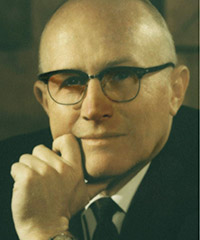
17. Neal C.Wilson:
- He was born in July 5, 1920 and died in December 14, 2010
- Country: United States
- Duration: 1979-1990
Neal C. Wilson was president of the General Conference of Seventh-day Adventists from 1979 to 1990. He received his elementary and secondary education, plus two years of college, in Zambia, Malawi, South Africa, and India. These were countries where his father served the Seventh-day Adventist Church in pastoral and administrative posts. Wilson is an alumnus of Pacific Union College in Angwin, California.[AdSense-C]
Neal C. Wilson’s son, Ted N. C. Wilson, would follow his father’s footsteps and is the current president of the General Conference of Seventh-day Adventists.
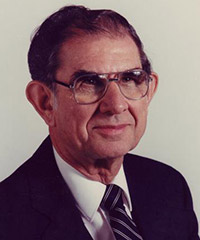
18. Robert S Folkenberg
- He was born in January 1, 1941 and died in December 24, 2015
- Country: Puerto Rico
- Duration: 1990-1999
Folkenberg was born in Santurce, Puerto Rico on 1 January 1941 to North American missionaries serving in Latin America and Central America. Folkenberg’s education up to Grade 4 took place in Puerto Rico, before attending schools in Cuba, entering high school in California and completing high school in Milo, Oregon in 1958. The next year, Folkenberg enrolled in Atlantic Union College where he remained for one year before a one-year stint at Newbold College. In 1962, Folkenberg graduated from Andrews University and obtained his masters in New Testament theology from Andrews in 1963.
Prior to his election as General Conference President in 1990, Folkenberg served as President of the Carolina Conference.
Robert Folkenberg died just before his 75th birthday on December 24, 2015, from a recurrence of colon cancer, at his home in Winter Haven, Florida, surrounded by family.
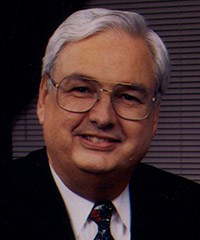
19. Jan Paulsen
- He was born in January 5, 1935
- Country: Norway
- Duration: 1999-2010
Paulsen was born on 5 January 1935, in Narvik, Norway to Adventist parents. Baptised at the age of 14, he attended Vejlefjord High School in Denmark and graduated in 1954. On 1 July 1955, he married Kari Trykkerud, with whom he has had three children: Laila (1961), Jan-Rune (1963) and Rein Andre (1970).
Paulsen studied theology in Denmark before obtaining a Bachelor of Theology degree from Andrews University. He went on to obtain his master’s degree from Potomac University. Paulsen also has a Bachelor of Divinity degree from the Adventist Theological Seminary at Andrews University. He is the first Adventist Church world president to hold a doctorate, which he obtained from the University of Tübingen.
Paulsen is the third non-American president of the World Church.
In February 2008, Paulsen was the first Adventist Church president to be interviewed on a major international television network, by Mike Schneider on Night Talk, Bloomberg Television.
He has outlined “three people in particular… who have helped me along the way” – his mother, schoolteacher O. K. Naerland and “mentor” theologian Ted Heppenstall.
On 11 November 2011, Paulsen was named a Commander of the Royal Norwegian Order of Merit. The award was presented at Tyrifjord Videregående Skole on 2 June 2012.
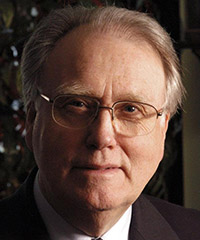
List of Presidents Of The Seventh Day Adventist Church From 1863 Till Date
20. Ted N.C. Wilson:
- He was born in 10 May 1950
- Country: United States
- Duration: 2010-
Wilson was first elected president at the 2010 General Conference Session, succeeding Jan Paulsen, who had served as president since 1999. In 2015, at the 60th General Conference Session, Wilson was re-elected for a second five-year term.
He is the current president of the General Conference of the Seventh Day Adventist Church after he was re-elected at the 60th General Conference Session.

List of Presidents Of The Seventh Day Adventist Church From 1863 Till Date
Sources:

